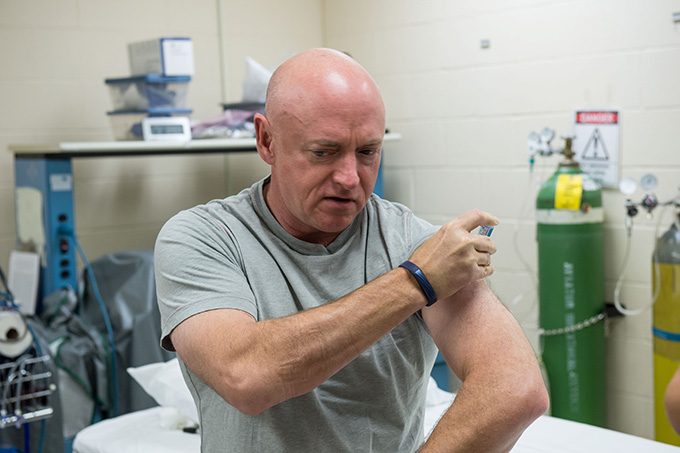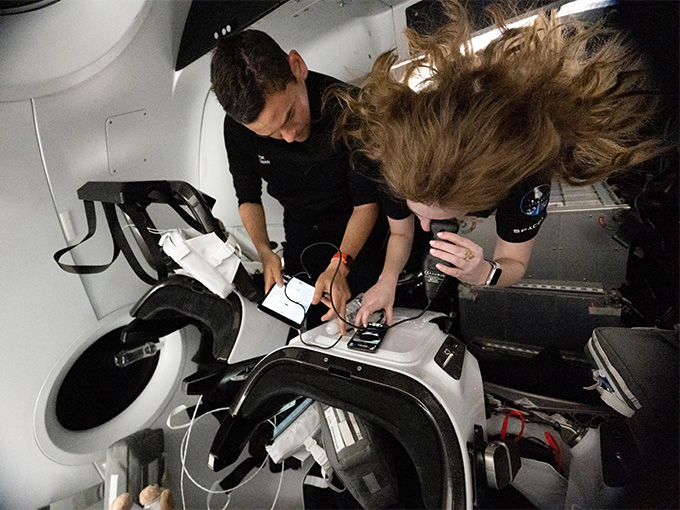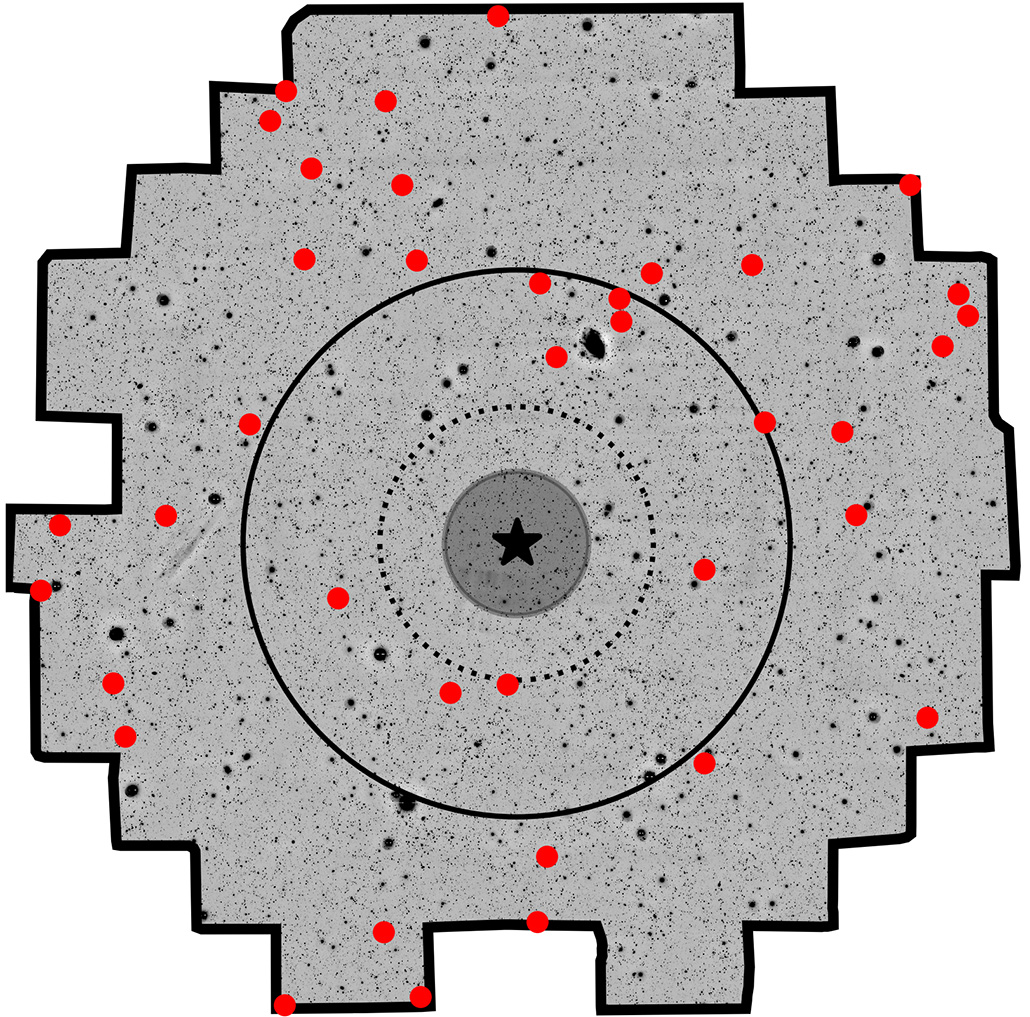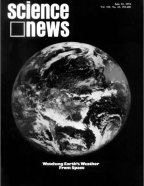They say that going to space changes you. Often, what’s being referenced is a shift in mindset, a renewed sense of perspective that comes from seeing our world from above, a phenomenon that’s been called the overview effect.
But it seems unlikely that rocketing off into the atmosphere, experiencing powerful g-force acceleration followed by a sudden weightlessness, then exposure to increased radiation and the utterly exotic environment of low-Earth orbit, doesn’t affect the human body in some way.
Medical researchers have been studying how spaceflight affects astronauts’ health since the dawn of the Space Age (SN: 6/23/62). Well-known problems include bone loss, heightened cancer risk, vision impairment, weakened immune systems and mental health issues (SN: 6/30/22, 7/15/20, 3/8/24). Yet what’s going on at a molecular level hasn’t always been clear.
A new project known as the Space Omics and Medical Atlas, or SOMA, is poised to help answer such questions. A suite of 26 papers appeared June 11 in various Nature journals, representing the largest database for aerospace medicine and space biology published to date.
SOMA is responding, in part, to a major shift underway in human spaceflight — the rise of crewed commercial missions such as Axiom, Polaris Dawn and SpaceX’s Inspiration4. The project’s datasets include clinical information from these missions as well as those from NASA and JAXA, the Japanese Space Agency. While professional astronauts employed by government agencies must undergo rigorous health screenings, no such similar regulations apply to private space tourists, leaving thorny medical, legal and ethical questions unanswered.
Space lengthens human telomeres
Perhaps the most well-known long-term biomedical NASA study involved identical twins Scott and Mark Kelly (SN: 4/11/19). Researchers looked at how Scott’s 340-day stay on the International Space Station affected his physiology, gene expression, immune system and mental reasoning compared with Mark, who stayed on the ground.
One fascinating finding from the study was that Scott Kelly’s telomeres got longer. Telomeres are short bits of repeating nucleic acids found at the end of DNA that act sort of like a shoelace cap, protecting the DNA strand. As cells divide, telomeres get shorter, a process thought to be associated with aging. But this didn’t mean that Kelly was getting younger while in space. In fact, he was potentially being put at risk of cancer.

Certain types of cancer “protect telomere lengths or cause telomere elongation,” says Eliah Overbey, a professor of bioastronautics at the University of Austin in Texas. “That’s part of why these cancers are tricky, because they’ll divide, divide, divide, but their telomeres aren’t getting any shorter.” Fortunately for Scott Kelly, once he returned to Earth, his telomeres shrank back to their preflight size.
But the experiment was limited by its tiny sample size.
“NASA didn’t repeat these sorts of studies on their future crews,” Overbey says. “They could be performing this routinely if they wanted, but they’re not pursuing this line of research very aggressively.”
Teleomere length, along with other molecular changes, including those related to immune response, DNA repair and stress, are data that Overbey and colleagues have collected with SOMA. And the data show that the short-term space jaunts, only three days, undergone by commercial crews such as Inspiration4 can have genetic effects not all that different from those of longer-term missions.
For the Inspiration4 crew, their telomeres lengthened during their short adventure and then returned to normal on the ground. “Even though they were only up there for three days, we were actually still able to see what was a pretty dramatic effect,” Overbey says.
Many other molecular changes followed similar patterns as the Twin Study, shifting during spaceflight for both short- and long-term flights and then largely returning to baseline once back on Earth, the SOMA data suggest.
What this means for astronaut health isn’t yet entirely clear, especially when projecting to the much longer timescales that a Mars mission or stays at a moon base might involve. Despite an increase in the number of people going to space, the sample sizes remain small, given that each of the new private missions has carried a crew of four. Even still, Overbey and her colleagues intend SOMA to become a hub for data on commercial and government crewed missions that can help answer pressing health questions.
“I view a lot of these datasets as hypothesis-generating machines,” she says.
Limited regulations raise ethical quandaries
But increasing the number of private individuals headed to space involves a host of ethical problems. Professional astronauts are continually checked by specially-trained physicians in order to continue going to orbit while, in general, the most important thing a commercial spaceflight participant needs is lots of money. And the U.S. government doesn’t currently have any health requirements for such individuals.
In order to give the nascent private space industry time to develop and gain experience without too much interference, Congress passed a moratorium on new safety regulations for commercial human spaceflight in 2004. The moratorium was originally set to expire in 2012 but has been extended multiple times, most recently to January 2025 with several proposed bills potentially pushing this date back for up to six more years.
This means that the Federal Aviation Administration, or FAA, which oversees launch licenses, doesn’t have the ability to mandate that private individuals undergo a health screening before strapping into a rocket seat.
“If you want to climb Mount Everest, you need to submit a health certificate,” says Dana Tulodziecki, a philosopher at Purdue University in West Lafayette, Ind. “That’s more than you currently officially need to do to go to space.”

The FAA suggests that private astronauts consult with a physician, who they recommend be trained in spaceflight issues, prior to flying. But there’s nobody checking to make sure that happens. And even if a doctor nixed a person from signing up for a commercial flight, what’s to stop that person from simply finding another doctor to okay them?
“These are obviously really complicated issues,” Tulodziecki says, noting that lawmakers should start figuring out what they need to consider about who should be allowed to fly on private missions long before the moratorium on regulations expires.
“There are lots of space ethics efforts that think about really large issues; political systems on other planets and whatnot,” she says. “But that’s really far in the future, right? This one is already here, it’s already happening. So, it’s really something urgent.”
#Human #spaceflights #era #fraught #medical #ethical #questions
Image Source : www.sciencenews.org



